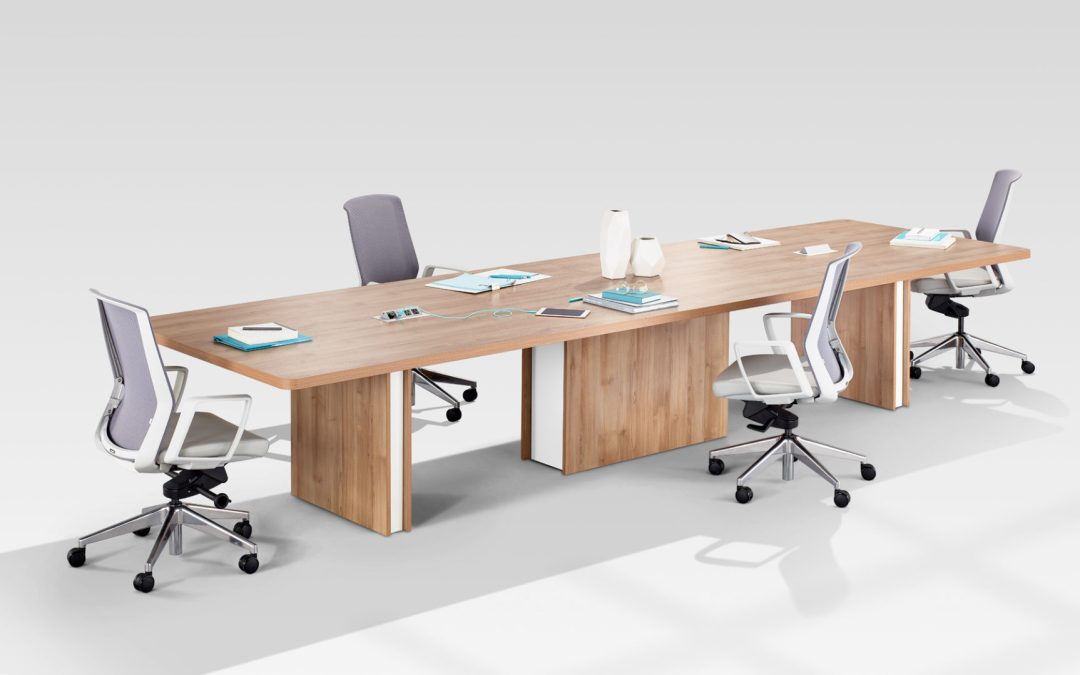Designing an effective conference room requires more than choosing a few pieces of furniture—it requires creating a space that promotes collaboration, comfort, and productivity. Whether it’s a boardroom table or seating that accommodates long meetings, each element in a conference room should reflect the purpose of the space. Here are five essential tips to guide you in designing a functional and stylish conference room that meets your team’s and client’s needs.
1. Prioritize the Conference Room Table
The table is the centrepiece of any conference room. It should comfortably fit all members and allow ample space to move around. A conference room table is an excellent option for businesses looking to create a professional look. When choosing a table, consider the shape as well. Round tables are ideal for smaller, more collaborative spaces, while rectangular or U-shaped tables work well in larger rooms where presentations are held.
Beyond the shape, consider features like cable management systems, which allow for a clean, organized space without distracting cords. If presentations are frequent, a table with built-in technology ports or power outlets can be convenient, helping you streamline device connectivity.
2. Choose Comfortable and Functional Seating
Comfortable seating is vital, as conference room meetings can last for extended periods. Choose ergonomic chairs with adjustable features, including seat height, lumbar support, and tilt options. This helps attendees stay comfortable and focused during long meetings. Selecting comfortable and functional chairs ensures participants maintain good posture, which can reduce strain and increase productivity.
Finding chairs that match your boardroom table can create a cohesive look. Opt for neutral-coloured chairs that blend with the room’s decor and prioritize models with a professional, clean look. Rolling or swivel chairs can add a dynamic feel, allowing participants to move and engage more freely.
3. Consider Acoustics for Optimal Communication
Good acoustics are essential in any conference room, impacting sound clarity and minimizing distractions. Acoustic panels or carpeting can help absorb sound, reducing echoes and making it easier for everyone to hear clearly. Consider using acoustic treatments to ensure clear communication in conference rooms with common presentations or calls. Additionally, thick curtains, upholstered chairs, or even a rug beneath the conference room table can enhance acoustics by reducing background noise.
4. Integrate Technology Seamlessly
Today’s conference rooms are more tech-driven than ever. Consider the technology your team uses frequently and design the room to accommodate it seamlessly. From projectors and video conferencing equipment to screens and interactive whiteboards, plan a layout that allows easy visibility and accessibility. Consider mounting screens on walls for visibility or using a conference room table with built-in power outlets to keep laptops and devices charged throughout the meeting.
5. Design for Flexibility and Multi-Purpose Use
Conference rooms are increasingly used for purposes beyond traditional meetings, such as training sessions or workshops. Smart furniture choices that can be rearranged to suit different functions are smart. Modular tables that can be grouped or separated allow for flexibility and adaptability, allowing you to reconfigure the space as needed.
Flexible design can also extend to your selected boardroom table. For instance, a table with removable sections allows you to create more space or change the room layout depending on the meeting requirements.
Transform Your Conference Room with Inspired Business Interiors Inc.
Ready to elevate your workspace with a professional and functional conference room design? Inspired Business Interiors Inc. provides expertly crafted board room and premium conference room tables in Winnipeg that merge style with functionality. Create an inspiring environment that enhances collaboration and impresses clients.
Reach out for a free consultation!

